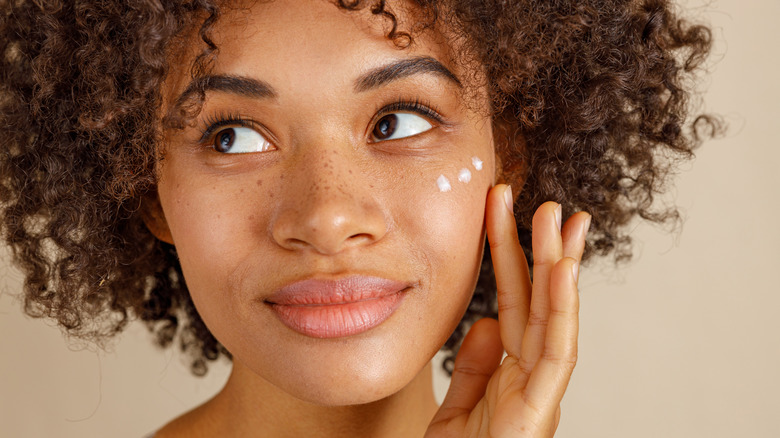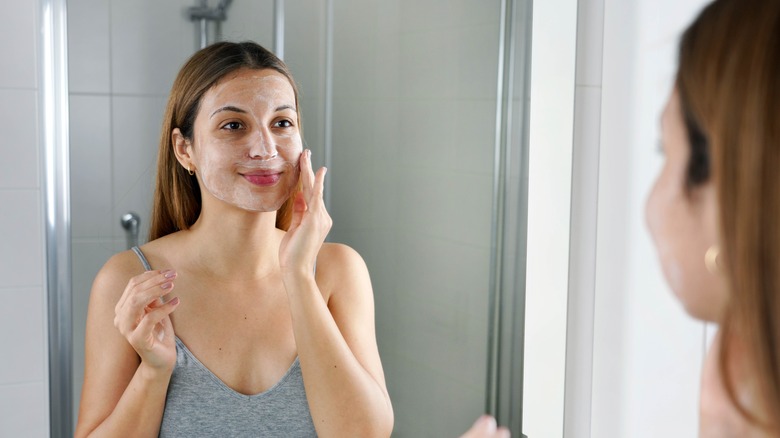Skincare Professionals Break Down The Ultimate 3-Day Skin Cycling Sequence
TikTok is a goldmine when it comes to beauty trends and hacks — ever heard of soap brows or heatless curls? But it can take some extra digging to find the true gems, like skin cycling. Skin cycling has been trending on the social media platform, with the #skincycling hashtag racking up 3.5 billion views to date.
Besides being buzzed about online, skin cycling also has derms' seal of approval. Dr. Marisa Garschick, a board-certified dermatologist, previously told The List that the trend is an ideal routine for beginners who are new to products like retinoids and exfoliants. Even those who are proficient in skincare can benefit from the routine, like dermatologist Dr. Rosemarie Ingleton, who told The New York Times that she herself skin cycles.
So how do you copy the method at home? Dr. Whitney Bowe, the dermatologist mastermind behind the routine, told Allure that skin cycling follows a four-night sequence: exfoliation night, retinoid or retinol night, and two back-to-back recovery nights. Then, repeat the cycle again over the following four nights.
To dive deeper into skin cycling, The List spoke with skincare experts to find out why the sequence works and which skin types it's best for.
Getting the most out of your exfoliant and retinoid
The skin cycling sequence kicks off with an exfoliant to speed up skin cell turnover, as Dr. Whitney Bowe explains in an Instagram video. Amy Peterson, medical aesthetician to the stars and founder of Skincare by Amy Peterson, also told The List that a chemical exfoliant on night one prepares the skin for retinoid the following night, making it easier for the active to penetrate the skin. As for what type of chemical exfoliant to use, Peterson says it all comes down to your skin type. "AHAs are water soluble and typically used for pigmentation, aging skin, and collagen production. BHAs are oil-soluble and are used to remove excess sebum and unclog pores," she explains.
On night two, Dr. Bowe recommends cleansing and thoroughly drying the face before applying a retinoid (via Self). For first-timers, start by applying a moisturizer to create a protective barrier. Board-certified dermatologist and Assistant Clinical Professor Dr. Marisa Garshick goes one step further, telling us that some people with sensitive skin may not tolerate retinoid well just after exfoliating the night before. She suggests skipping a night between exfoliating and applying retinoids to ward off irritation.
Are recovery nights really necessary?
Dr. Whitney Bowe believes it's best to give your skin a rest after applying harsher products during the first two days of the skin cycling sequence. In a TikTok video, she explains the recovery period on nights three and four, saying, "On those nights, you want to avoid any exfoliating acids, you want to avoid any retinoids, you want to avoid any potentially irritating ingredients, and just focus on nourishing your skin barrier and your skin microbiome." She suggests prioritizing hydrating skincare products on these nights.
However, double board-certified dermatologist Dr. Karan Lal told The List that recovery nights aren't always necessary, especially for non-sensitive skin types. He says that key complexion-boosting ingredients — including moisturizers, mild exfoliants, and retinol — are generally fine to use daily. "Think of working out," he explains. "Exercising once a week doesn't get you results — consistent work gives results. The same applies for using a retinol/retinoid." Dr. Lal notes that skin cycling can be a good way to get acquainted with unfamiliar ingredients until you learn what your skin can tolerate.


